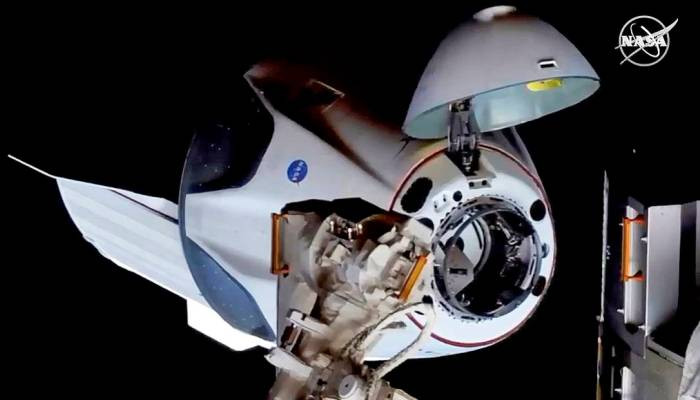SpaceX's Dragon: First Private Spacecraft to Reach the Space Station
 3787 Sunday, 31 May, 2020, 20:50 SpaceX, the private space company founded by entrepreneur Elon Musk, made history in the world of privately-funded space travel with its Dragon and Crew Dragon spacecraft. In March 2019, SpaceX's Crew Dragon, the company's spacecraft designed to carry astronauts into space, completed its first test mission to the International Space Station (ISS). Prior to that, in 2012, the Dragon cargo spacecraft made history when it was the first private spacecraft to berth with the ISS. Since then, Dragon has continued carrying cargo to the ISS under commercial agreements with NASA. In 2014, SpaceX received $2.6 billion from NASA for one of the final phases of the Commercial Crew Program, which aims to fly astronauts on American spacecraft starting summer 2019. (NASA gave Boeing $4.2 billion to develop its CST-100 Starliner module, with the same goal.) SpaceX successfully launched the Crew Dragon capsule to the ISS on March 2, 2019 from a two-stage Falcon 9 rocket. The spacecraft then docked with the ISS on March 3, and returned to Earth on March 8. The six-day flight was uncrewed but carried a sensor-laden dummy astronaut named Ripley. The dummy recorded a slew of information on what future live astronauts will experience while riding in the Crew Dragon capsule. The spacecraft also carried an adorable "zero-g indicator" — a plush toy version of Earth thrown in at the last minute. The toy floated around the cabin when the spacecraft experienced microgravity. SpaceX unveiled its design for the crewed spacecraft in 2014 to great fanfare. It's essentially a modified version of SpaceX's robotic Dragon spacecraft. Crew Dragon can carry up to seven astronauts, includes a life support system, an emergency-escape system, touch-screen displays, windows and other passenger-related equipment. Another design change is that Crew Dragon docks directly to the ISS while the Dragon freighter is grabbed by the orbiting lab's large robotic arm and brought into place. Dragon development The news became public in March 2006 after SpaceX and several teammates submitted a proposal for NASA's Commercial Orbital Transportation Services (COTS) demonstration program. NASA accepted the SpaceX proposal in August 2006. SpaceX initially received a contract valued at up to $278 million; later, other milestones were added that boosted the total possible contract value to $396 million. Dragon passed a NASA critical design review in October 2007, marking a key milestone, as this is when the shape of the spacecraft was determined. The next month, SpaceX broke ground for a launch site at Cape Canaveral Air Force Station. |

Japan Unveils Human Washing Machine, Now You Can Get Washed Like Laundry (video)
784001.12.2025, 20:45
Chinese humanoid robot sets Guinness World Record with 106-km inter-city walk (video)
873724.11.2025, 16:30
Musk։ Optimus will be able to eliminate poverty and provide everyone with a universal high income (video)
1031823.11.2025, 12:45
AGMI researchers expose the hidden role of female perpetrators in the Armenian Genocide (photo)
525713.11.2025, 21:15
LVM3-M5 mission successfully launches CMS-03 satellite (video)
795802.11.2025, 21:17
Google разработала квантовый алгоритм, работающий в 13 тыс. раз быстрее алгоритма суперкомпьютеров
774522.10.2025, 23:44
Apple introduces the powerful new iPad Pro with the M5 chip
853315.10.2025, 23:34
Apple debuts iPhone 17
866209.09.2025, 23:08
